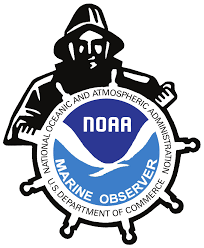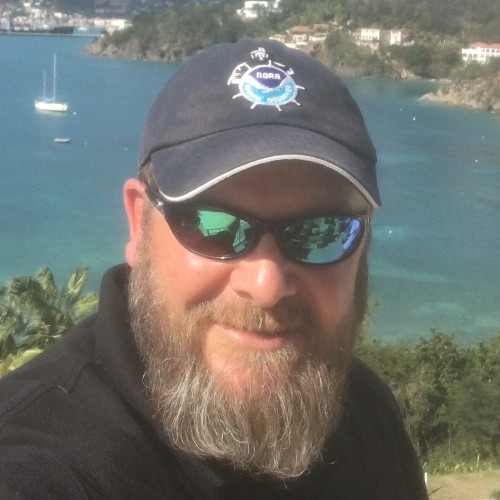
Many classes participating in the Follow the Voyage-Share The Experience Program are kicking off 2023 weather units.
One question that has been asked several times is:
How are meteorologists able to make weather predictions for ships traveling around the world?
During Sea Term 2023, the TS Kennedy is just one of the 90,000 ships that are at sea on any given day. Meteorologists have a tough job coming up with an accurate forecast for each one of them. The fact that each ship is moving, makes the forecasting even more challenging.
Fortunately, meteorologists can rely on:
A. weather buoys
B. satellites
C. aircraft
D. weather balloons
E. RADAR
and…
F. Massachusetts Maritime Academy cadets
That’s right, Massachusetts Maritime Academy cadets aboard the TS Kennedy help meteorologists create accurate weather forecasts. The TS Kennedy is one of over 3,000 ships in the merchant marine, NOAA Corps, Coast Guard, and Navy that participating in the Voluntary Observing Ship Program (VOS). During Sea Term 2023, you can think of the TS Kennedy as a floating weather station; collecting, reporting, and receiving weather data throughout her voyage.
The history of VOS can be traced back to 1853 when the United States Navy Hydrographic Office proposed a uniform reporting system for ships. As the name suggests, taking part in VOS is completely voluntary. There is no cost to the ship. The communication charges, observing equipment and reporting supplies are provided free of charge by the National Oceanic and Atmospheric Administration (NOAA) and the National Weather Service (NWS).
When our cadets boarded the TS Kennedy, they became part of a worldwide weather observation team.

Participating ships are asked to taken and transmit weather observations every 6 hours at 0000, 0600, 1200, and 1800. The program aims to have every vessel around the world take a snapshot of the weather at the exact same time, regardless of where they are.
Are you wondering how cadets aboard the TS Kennedy get involved? Take a look!
Throughout NOAA’s promotional video about the Voluntary Observing Ship Program, the TS Kennedy is front and center. Much of the video was filmed aboard our training ship seven years ago. You will see the TS Kennedy’s first Captain, Thomas Bushy and being interviewed both on the Bridge and in his office. You will also see cadets and crew members making and recording weather observations, both on the Bridge and out on deck. Be sure to watch for a cadet sitting at a computer. She is filling out the form that will be submitted as the TS Kennedy’s 1200 observation.
As you watch, be on the lookout for NOAA Port Meteorologist, Rusty Albaral. Rusty was joining NOAA Port Meteorologist, Rob Niemeyer aboard the TS Kennedy for his first Sea Term. Over the years, the New Orleans, Louisiana native has returned to the TS Kennedy educate cadets on weather observing, forecasting, and weather awareness. Rusty hopes to instill in all cadets the importance of ships participating in VOS. He hope that the cadets will share that message when they are working on vessels around the world. Captain Campbell and the crew are thrilled to have Rusty return for Sea Term 2023.

First, watch the video to soak up the information about the Voluntary Observing Ship Program. Next, replay the video to study the clips filmed aboard the TS Kennedy. Observe what the cadets are doing and the tools that they are using. You may even want to watch it for a third time.
Students in grades 5-12 may wish to continue their learning by following the link below. Scroll down the page and click on Shipboard Observations to open up a PowerPoint Presentation about VOS.
https://www.vos.noaa.gov/vos_resource.shtml
Please keep your questions coming!